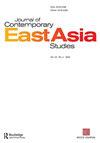Use of legal instruments in the ASEAN Economic Community building
IF 1.4
Q1 AREA STUDIES
引用次数: 3
Abstract
ABSTRACT Using the official data of the ASEAN Secretariat, this paper applies a data-based approach to present the general trends of use of legal instruments in building the ASEAN Economic Community and ASEAN integration as a whole. ASEAN has intensified the use of legal instruments in the last five decades to reach 240 signed legal instruments by December 2020. With the frequent use of supplementary instruments, ASEAN takes a gradual and practical approach to integration. Consensus remains the key principle of decision-making in making legal instruments. There is no single legal instrument signed without consensus, even in the economic pillar. By contrast, ASEAN allows phased implementation. While a majority of ASEAN legal instruments enter into force only with full membership, many instruments also allow flexible participation (i.e., effective only among certain members). Such mechanism of flexibility is probably a way to progress integration in a group of diversity while continuing to respect the consensus principle in decision-making.法律文书在东盟经济共同体建设中的使用
摘要本文利用东盟秘书处的官方数据,采用基于数据的方法,介绍了在建立东盟经济共同体和整个东盟一体化过程中使用法律文书的总体趋势。东盟在过去五十年中加强了法律文书的使用,到2020年12月已签署240项法律文书。随着补充文书的频繁使用,东盟对一体化采取了渐进和务实的做法。协商一致仍然是制定法律文书的关键决策原则。没有任何一项法律文书是在没有协商一致的情况下签署的,即使是在经济支柱领域也是如此。相比之下,东盟允许分阶段实施。虽然大多数东盟法律文书只有在正式成员国的情况下才生效,但许多文书也允许灵活参与(即仅在某些成员国之间有效)。这种灵活性机制可能是在一个多元化群体中推进一体化的一种方式,同时在决策中继续尊重协商一致原则。
本文章由计算机程序翻译,如有差异,请以英文原文为准。
求助全文
约1分钟内获得全文
求助全文
来源期刊

Journal of Contemporary East Asia Studies
Social Sciences-Cultural Studies
CiteScore
2.50
自引率
0.00%
发文量
10
审稿时长
6 weeks
 求助内容:
求助内容: 应助结果提醒方式:
应助结果提醒方式:


